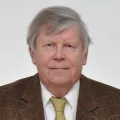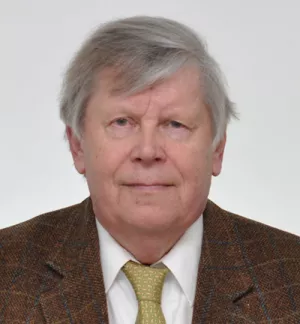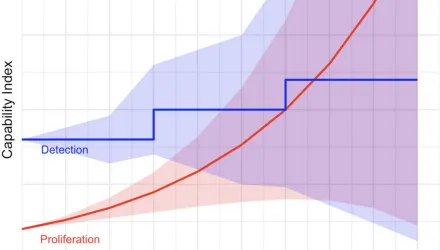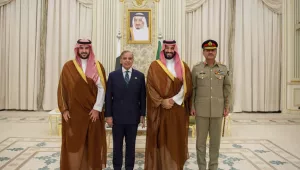Olli Heinonen, senior fellow at Harvard Kennedy School's Belfer Center, made this presentation at the conference "Reassessing the Assumptions Driving Our Current Nuclear Nonproliferation Policies," hosted by the Nonproliferation Policy Education Center (NPEC) on May 21, 2012.
"The nuclear non-proliferation regime continues to face a broad array of challenges. It is easy to see why new solutions are needed. The world is undergoing rapid changes on many fronts — including technologically. The Nuclear Non Proliferation Treaty (NPT) entered into force 40 years ago. It should not surprise us that the solutions of 1970 are not a perfect fit to the challenges of the 21st century. In particular, during the last two decades, we have seen three major developments related to nuclear proliferation: (1) the increased dissemination of nuclear technology and nuclear ‘know-how’; (2) a renewed drive on the part of (a few) state as well as non-state actors seeking to acquire nuclear weapons; and (3) the emergence of clandestine nuclear procurement networks. The following reality is before us: either we continue to overcome the vulnerabilities or accept a nominal international nuclear safeguards system. Some improvements to the system do require political will and agreement, but there are also technical fixes that can be implemented by the IAEA in capitalizing on its verifications objectives and without additional external endowed authorities.
Which then are the areas that the IAEA should focus on in providing for a more effective safeguards regime? Looking back, proliferation cases of the last two decades have shared several common features. Proliferation countries used clandestine facilities and exploited loopholes within the IAEA verifications system itself, such as acquiring nuclear material like uranium from ores or yellow cake where no actual IAEA verification is applied. Much of the clandestine work also took place at undeclared / unreported facilities. The logic is simple - the IAEA verification system is good enough to detect diversion of nuclear material, but still falls short of any foolproof method to detect clandestine facilities or to a certain extent, a misuse of declared facilities. Efforts have been made to address these deficiencies. The IAEA verification system was overhauled fifteen years ago by providing the inspectorate with more access rights, namely introducing the Additional Protocol and an early provision of design information. A ‘State Level Approach’ system was also implemented, where the state’s nuclear program is assessed annually using a holistic method. Equally vital to the IAEA’s verification scheme was the inculcation of an investigative inspection culture, a cornerstone to complement better access and information provided for under a reformed verification regime.
At the same time, the IAEA state level concept system while approaching safeguards from a more critical approach also has as its by-product a reduction of actual on-site inspection activities by complementing it with enhanced information analysis. This means that the physical presence of inspectors, the eyes and arms of the international community, at the nuclear installations is less frequent, but fairly predictable rate. By and large, this is a progressive step for the Agency to provide for cost effectiveness while stepping up and maintaining safeguards assurances. For the state level approach to function optimally, all the ingredients must be in place, i.e. effective analytical and critical investigative culture, equipment and tools available to ensure broader conclusions are drawn on a state’s nuclear activities, and cooperation from states themselves.
Concerns are certainly heightened when a state uses sensitive technologies such as uranium enrichment or reprocessing. Article III of the NPT lays down as the objective to prevent diversion of nuclear energy to nuclear weapons. This objective is wider than just the detection of diversion of nuclear material. Is the Agency’s verifications system able to see those indications?
To better understand the modifications and fixes needed, it is important to look at the current verification system. One is in the area of nuclear ‘transparency’. Another is in the area of expanding unannounced and special inspections. A third is in the area of monitoring to prevent a ‘breakout’ scenario.
Unannounced inspections
Routine inspections - the most common type of inspections - are carried out according to a defined schedule. The Agency´s right to carry out routine inspections under comprehensive safeguards agreements is limited to those locations within a declared nuclear facility, or other locations containing nuclear material, through which nuclear material is expected to flow (strategic points). The safeguards agreement also has a provision that allows for unannounced inspections. Unannounced inspections have been the core of safeguards at enrichment plant sites, but rarely used elsewhere.
Unannounced inspections are in reality not quite as it name implies but is carried out with a short advance notice, typically about two hours, so that appropriate security arrangements can be completed and the state inspectors can be present. These requirements arise from the subsidiary arrangements concluded between the IAEA and inspected state. Such short notice inspections have been carried out at the light water reactors in South Korea, where they form part of a quality assurance component of remote monitoring that is being applied. In Japan such inspections have been used at its fuel fabrications plants to monitor nuclear material flow. At the uranium enrichment plants worldwide, this scheme has been used to ensure that the enrichment cascades are not modified or used to produce high-enriched uranium. More recently the short notice inspections have also been modified to cover nuclear material flows at the enrichment plants.
Currently, the IAEA annually conducts a total of few hundred person-days of unannounced inspections, which are only a fraction of the total annual 8000 person days of inspection. The unpredictability of such (unannounced) inspections is meant to enhance the effectiveness of the inspection regime. They are also incorporated with the Agency’s integrated as well as traditional safeguards approaches. Many other steps also go into providing assurances, inter alia, periodical confirmation of nuclear material balances, covering of credible scenarios for diversion of nuclear material and misuse of facilities, and detection of signs of turning nuclear material for weapons purposes before it actually takes place. The implementation parameters between traditional and integrated safeguards approaches may differ from each other, but in both cases the verification system has to ensure that the detection probabilities remain high and timely.
Special inspections
The IAEA also has in its toolbox the authority to conduct ‘special inspections’. The term “special inspection” has an unnecessarily negative connotation that resulted from the circumstances under which it was discussed in the past. Cases linked to the call for special inspections to be evoked included North Korea, Iran and Syria. States indeed would not suffer any disadvantage from the use of special inspections. On the contrary, the possibility of dispelling doubts through such inspections should be an advantage to all except those states who have violated their commitments. A debate in the Board on the use of special inspections will not, under current circumstances, bring a solution to the problem of its use. Rather, the IAEA Secretariat should be constantly encouraged to use all its inspection rights, including that of special inspections as an option. The proliferation cases mentioned above also reveal that the IAEA DG’s position and interpretation is instrumental in the willingness to evoke special inspection procedures. To date, it appears that the bar of its actual use remains unnecessarily high.
Nuclear transparency
In the early 1990’s, during IAEA Board discussions on strengthening the Agency’s safeguards, former DG Hans Blix advocated ‘transparency visits’ to clarify questions and ambiguities on several states’ nuclear programs.
The IAEA conducted several of such visits to North Korea, South Korea, Iran, Taiwan and South Africa. Such visits were also carried out at a later date to remove some ambiguities in Japan and elsewhere. The outcomes of the various ‘transparency visits’ carried out were of mixed success. In the case of North Korea and Iran, it had not rung the alarm bell on the clandestine activities of their nuclear programs.
Instead, transparency visits to Iran in the 1990s provided a false sense of security, both internally within the IAEA as well as externally to the larger international community. The IAEA provided assurances through press statements following each of the various transparency visits made to Iran without inspectors taking environmental samples (with one exception) or conducting more technical investigations. This significance cannot be understated since inspectors did come up with proof of undeclared nuclear material.
Short of an implemented Additional Protocol that provides the legal basis for more intrusive inspections, transparency visits also remained at the behest of the ‘goodwill’ of the inspected state. The limitations of transparency visits were moreover not well understood by the Board and the public. As such, it was not obvious that assurances made by the IAEA through press statements etc. that no evidence were found concerning external reports of undeclared nuclear activities undertaken in Iran at sites visited by the IAEA*, were not derived as a result of rigorous safeguards carried out. The danger of providing a sense of complacency had telling consequences on implementing safeguards in Iran years down the road as we are now witnessing.
The Secretariat should be clear that transparency implies openness, communication, and accountability. Occasional visits by diplomats or invitations to IAEA officials do not replace Iran’s Nonproliferation Treaty, UN Security Council and IAEA obligations. Since Iran continues to remain in deficit in fulfilling those international requests, it is in equal deficit in its transparency with regard to its actions and nuclear activities.
Monitoring to prevent nuclear breakout scenarios
In proliferation cases such as Iran where there remains risks involved for a breakout scenario with the presence of enrichment and unresolved military dimensions on its nuclear program, the case for effective nuclear verifications is both at the same time more important as well as more challenging. For the case of Iran, an ‘Additional Protocol-plus’ type of agreement implemented in a cooperative manner by Iran would be required. There are also important distinctions to be made between Iran and other countries that conduct enrichment or have a developed nuclear fuel cycle. Japan, Germany and the Netherlands, for example, are presented as “latent or virtual nuclear weapon states”. There are four differences in these countries compared to Iran: there are no indications of nuclear weapon development related R&D; these states are in compliance with the terms of their safeguards agreements; they are applying additional protocols; and they do not appear to have uranium enrichment excess to their needs. Prevailing conditions in these countries may change over time. With proper safeguards in place, detection should be easier to pick up at an early stage.
This brings up a related point concerning the IAEA’s reporting practices. The vital nature of picking up and reporting early signs in any state that could involve potential diversion or cause for suspicion of safeguards failures cannot be overstressed. Early corrective measures can be useful. In more serious cases of potential subversion of peaceful nuclear use, early notification to the IAEA Board including on safeguards implementation problems can provide for more timely ratification or ramifications. To this end, the IAEA Annual Safeguards Implementation Report would also benefit from more detailed findings and conclusions drawn and written in a more targeted approach to fulfilling such assurances.
Conclusion
As measures are developed to continue to strengthen the IAEA verifications regime, it is equally important to ensure its thorough implementation and that its effectiveness is maximized. A robust IAEA inspections regime contributes directly to preventing, detecting and deterring untoward nuclear activities. This is no easy task. To this end, critical self-reflection, recognition of weaknesses in the inspections system and seeking solutions as best possible can address is necessary to provide the meaningful assurances to uphold nuclear non-proliferation."
Heinonen, Olli. “IAEA Inspections in Perspective.” May 22, 2012
The full text of this publication is available in the link below.





